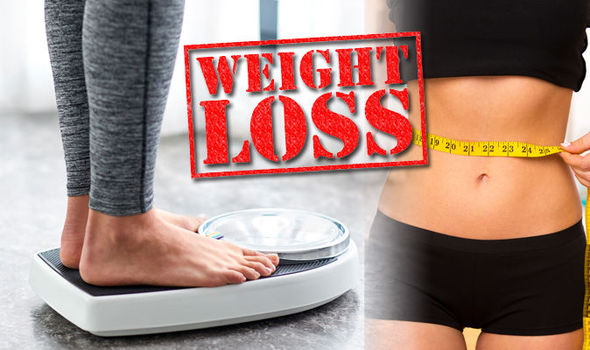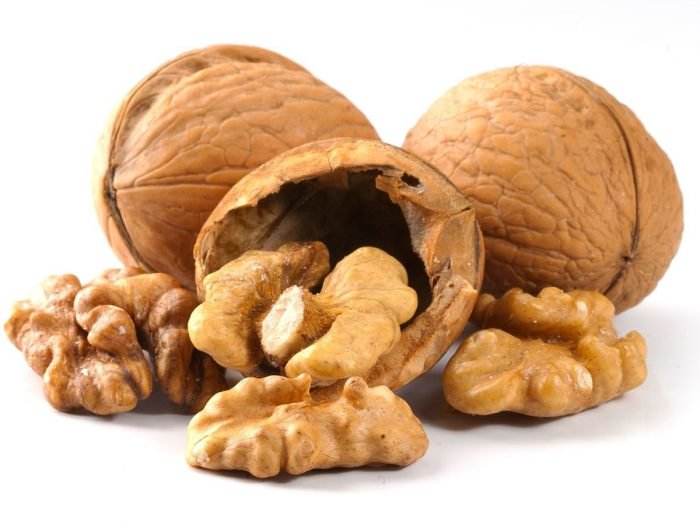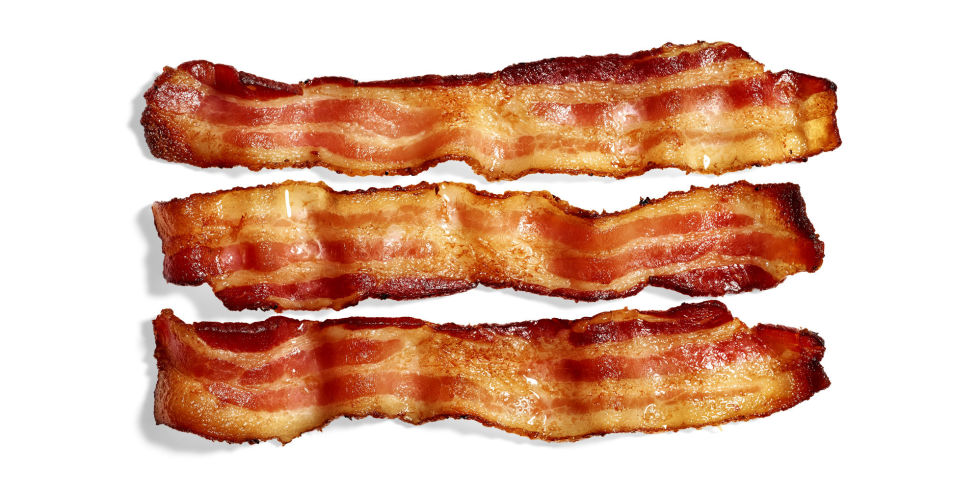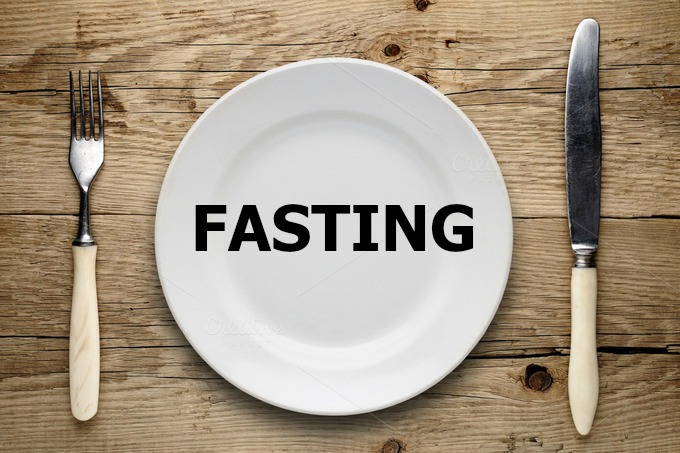
Disclosures: I have no conflicts of interest from any pharmaceutical company or research organization. I do not make any money from sharing this information. The purpose is for informational value for patients or others who are interested in learning what I have discovered about how to lose weight and also help improve the health for patients with diabetes or prediabetes. I believe it’s very important to work with a doctor familiar with your diet, especially if you take medications to treat diabetes or heart related conditions so that together, you can ensure you remain safe whenever you change your diet.
Weight loss is a popular topic, both in social media and in the doctor’s office. I would suggest that a majority of major healthcare problems facing Americans today are related to being overweight or obese. In fact, 75% of Americans are currently either overweight or obese and this statistic is rapidly worsening.
How do you define a healthy weight, overweight or obese?
Body Mass Index (BMI) is the measurement that we use in the medical field and it’s a measurement of your weight vs your weight.
Normal BMI – 18.5 to 24.9
Overweight BMI – 25 to 29.9
Obese BMI – 30 to 39.9
Morbidly obese BMI: 40 or above
BMI measurement doesn’t work for professional athletes because they have so much muscle mass that the BMI calculation would say that they are obese, even though their percentage of body fat is very low. For those patients, a % body fat calculation is more accurate:
For Men: For Women:
Obese – 25% or above 32+ or above
Average – 18 to 24% 25 to 31%
Fitness – 14 to 17% 21-24%
Athletes – 6 to 13% 14-20%
Complications from the obesity/overweight epidemic:
- Metabolic syndrome (high blood pressure, high cholesterol, obesity and diabetes)
- Increase risk of heart attack
- Increased risk of stroke
- Increased risk for some forms of cancer
- Arthritis/joint pain due to the extra stress from the weight
- Back pain
- Low testosterone/sex drive
- Low energy levels
- Difficult to exercise because of the extra weight
- Heat intolerance
- Obstructive Sleep Apnea
- Lower self confidence
- Difficulty with bucket list items on to-do list after retirement such as travel due to decreased endurance, joint/back pain
Many of my patients are struggling with weight gain issues and they often come in to ask my advice about how to lose weight. Over the years, I’ve learning quite a few tips that have helped myself and my patients who want to accomplish this goal. Most all of us have tried a diet. We may lose a few pounds and then get discouraged when the weight loss stops or when we start feeling a lack of energy, cold, hungry and irritable. Even more, if we do finally reach our goal weight and stop the diet, the pounds start piling back on leading to the yo-yo effect that is so common with dieters. So, what can you do to lose weight and keep those pounds off?
Physiology of weight gain:
Let’s start with discussing a little physiology regarding weight gain. Most people don’t become overweight or obese overnight. The body has a set-point that it considers as it’s “normal weight” that it would like to maintain. For example, if you normally weigh 180lbs and then go on spring break and gain 10lbs by taking in lots of extra calories during that week, your body will increase your metabolism and actively try to burn those calories to get back to 180lbs. This is great, but there is also another side of this.
Over years, if you take in more calories than you burn, your body may increase the set-point of what it considers your normal body weight to be and will try to maintain it. For example, if you are now 230lbs and have been that weight for months or years, your new normal weight set point may change from the initial set-point of 180lbs to 230lbs . This can make it much more challenging for you to lose weight, because the body will do all it can to maintain this new body weight. If you decide to lose weight by taking in less calories, say 1500 calories per day instead of 1800 calories, your body will recognize that you’re not getting enough calories to maintain this weight of 230lbs and will actively try to stop losing weight. You may feel cold as your metabolism slows down. Instead of your body burning 1800 calories/day to maintain your weight, your body may decrease its basal metabolic rate to burn only 1300 calories per day, so you feel cold, sluggish, hungry and irritable. You may start losing weight at first, but as your body changes your basal metabolic rate, you might actually start gaining weight gain (remember you’re taking in 1,500 calories and the body has slowed its rate to burn 1,300 calories/day).
Insulin and weight gain:
You probably recall hearing about insulin in the context of diabetes, but it’s also a very important hormone in the context of weight gain. Insulin is the hormone that helps us take energy that we eat which is processed into sugar and remove it from the blood and turn it into energy for use to power our brain, muscles and internal organs. The problem is, if we take in too many carbs which get processed into sugar, that sugar will need removed from the bloodstream and either stored (as fat) or excreted (perhaps in the urine). Our bloodstream can only hold 1 teaspoon (4 grams) of sugar at any given time so that sugar has got to go somewhere or we’d all get sick and end up in the hospital with elevated blood sugars. Most of it gets stored as fat. We don’t want that when we’re trying to lose weight. We also don’t want to excrete sugar in the urine because that damages the kidneys.
In some circumstances it is very appropriate to store food energy as fat, and insulin does its job, allowing you to store energy in your fat cells so that if you get sick or go through times when food is not available, you have reserves to get through those periods. Most of us however, do not want to store fat, and we would rather that our bodies break it down and use excess fat as fuel, so we can lose weight. The body is smart however and doesn’t want to break down your fat storage (lipolysis) at the same time it’s storing that orange juice (with lots of sugar) that you just drank. It’s important to understand that certain foods stimulate the body to secrete insulin more than others. In general, high carbohydrate foods cause the pancreas to release more insulin which signals the body to store the food you ate as fat.
Carbohydrates:
What is a carbohydrate anyway? You probably already know that there are three main macronutrients that we take in as food. Proteins, fats and carbohydrates (carbs). Carbs can come in the form of sugar, but also are in starchy foods such as rice, potatoes, noodles, grains/breads. They are also in foods such as fruits and vegetables. We already know that some foods have more carbs than others. Carb intake stimulates the body to secrete insulin in order to bring down the blood sugar and store that sugar in our fat cells. Of course, we don’t store all the sugar that we consume as fat, but since our 5 liters of blood supply can only hold about a teaspoon of sugar (4 grams) at any given time, we have to use it up quickly (some athletes such as marathon runners can do this) or it will be stored as fat (and a little as glycogen in the muscles and liver).
The USDA food pyramid that was released in the 1970’s that we are all familiar with put carbohydrates at the base and indicated that we should get 50-60% of our calories from carbohydrates such as breads, cereals, rice and pasta. Fruits (which are also high in carbs) are listed in the middle of the pyramid. Unfortunately, since these recommendations were released, the obesity and diabetic epidemics have become widespread public health concerns. Many experts are now suggesting that consuming so much of our food for carbohydrates is what is leading to the obesity epidemic in America.
Fat:
When I was growing up and learning about nutrition, I remember hearing that fat is bad, and we should avoid it. The truth is, our body needs fat in order to function properly. It’s also a myth that eating fat will make you fat. Certain populations of people around the world consume large amounts of fat and have lower body weights overall than Americans. These populations of people have less diabetes and obesity related health problems. There are different forms of fat, some good and some not-so-good. Fats can be solid or liquid at room temperature. If a fat is solid at room temperature it is a saturated fat. If it is liquid at room temperature, it’s unsaturated fat or oil.
We now know that we should try to avoid polyunsaturated fats such as margarine, Crisco, and certain oils (canola, vegetable/soybean, corn, sunflower, grapeseed, peanut, safflower, cottonseed). These polyunsaturated and trans fats are often found in processed foods at the grocery store and fast food restaurants.
Oils that are considered much better for you include olive, coconut, palm, avocado, walnut, hazelnut, almond, macadamia nut, sesame, fish.
In the 1970’s there was some controversial research that came out that recommended that Americans “cut the fat” from our diets. The food pyramid that we are all familiar with put fats at the top of the pyramid (along with sweets) indicating that we should consume them sparingly. I say that this is controversial because there is growing evidence that consuming a high fat diet is not necessarily bad for you, and many researchers have shown that a high fat/low carb diet is beneficial for weight loss because consuming fat does not cause insulin spikes that lead to weight gain. Consuming fat also leads to a feeling of satiety and that means that you feel full for longer after eating a meal higher in fat than you would if you had consumed a meal with a similar calorie count that was made up of mostly carbs.
Protein:
Protein is the other macronutrient that is important in our diet. It is important to remember that protein, although it does not inherently contain sugar/carbs, can be processed by the liver and turned into sugar in our bodies if we consume too much. I’m explaining this because some people who are new to low carb diets decide to eat multiple servings of meat and other high protein foods and when they consume too much protein their bodies can process these foods into sugar through the process of gluconeogenesis thus leading to difficulty losing weight. If you’re trying to lose weight, I recommend a moderate intake of protein.
The diet for weight loss: Low carbohydrate/High Fat (LCHF)
I recommend a low carbohydrate, high fat diet which is also known by the abbreviate LCHF. Others may call it a ketogenic diet.
In general, I believe that eating “real food” as opposed to highly processed foods is much better for your health and for weight loss. Foods that are lower in carbohydrates do not stimulate the body to secrete high levels of insulin and thus have less of a fat storage effect and will allow your body to go into a state of ketogenesis. Ketones are a byproduct of fat burning and can fuel the body much like glucose (sugar).
What foods are good to eat that are low carb/high fat (LCHF)?





- 1). Avocados
- 2). Cheese
- 3). Eggs
- 4). Fatty fish
- 5). Nuts
- 6). Olive Oil
- 7). Grass fed beef
- 8). Coconut
- 9). Dark Chocolate
- 10). Greek Yogurt (without fruit)
- 11). Wild Salmon
- 12). Heavy cream/milk
- 13). Tuna
- 14) Duck
- 15). Bacon
- 16). Butter
- 17). Cottage cheese
- 18). Best nuts – macadamia, pecans, hazelnuts, Brazil nuts, (avoid peanuts, pistachios and cashews)
- 19). Most vegetables (careful with some root vegetables such as carrots that have higher sugar content).
What are foods that I recommend avoiding to lose weight?
- Sugar sweetened beverages (soda, fruit juice, sports drinks, frappuccinos, etc.)
- Breakfast cereals
- Cookies
- Candies
- Crackers & chips
- Pastries, doughnuts and muffins
- Ice cream
- Jams and Jellies
- Yogurt with lots of sugar
- Be careful with fruit – most have lots of sugar
- Most items that say low fat are actually high sugar
- Processed foods – most foods in the grocery stores are processed foods these days
- Avoid too much protein
Do I need to count calories?
Yes and no. When eating a lower carbohydrate – higher fat diet, people tend to feel full faster and for longer periods of time compared with eating sugar/carbs. If you eat too much of anything, including fat, you can gain weight however. This is much less likely with fat than carbohydrates.
Why should fat/protein make you full faster and for longer than carbohydrates?
Carbohydrates/sugar do not stimulate the satiety hormones ghrelin and leptin. These hormones that are normally released when you eat a higher fat diet are what signal the brain to tell you that you’re full after you eat a meal. The bad thing is that these hormones aren’t released after eating sugar/carbs, so after drinking a 300-calorie soda, you aren’t as likely to feel full as you would be after eating 300 calories of avocados and eggs for example.
Can I just exercise and lose weight instead of control my diet?
There is no denying that exercising is healthy for your body. The question about using exercise for weight loss is more interesting. I don’t know about you, but I could eat a 200-calorie cookie in just a couple minutes (maybe less) and I would have to run for at least 20 minutes to burn those calories off. I could also easily eat 3 or 4 cookies in just a few minutes and I would not be able to keep up with burning all those calories with exercise alone. Most experts would agree that it’s much easier to lose weight by changing your diet than it is to simply start exercising more.
Exercise is great for your body and it helps improve mood. Being physically fit helps you feel better in general. Physical fitness helps improve longevity and decreases muscle pain.
What about alcohol?
Certain kinds of alcoholic drinks have more carbohydrates and sugar than others. Beer can be very high in carbohydrates and so can spirits/hard liquor that’s mixed with fruit juices or soda. Wine and spirits (without mixers) tend to be lower in carbohydrates than beer and mixed drinks. Be careful with alcohol because it’s easy to drink more than you meant to and eat foods along with the alcohol that are unhealthy.
Is it safe to use the Low Carb/High Fat Diet (LCHF) or Ketogenic diet if I have type 1 or type 2 diabetic?
Certainly, but I recommend working with a doctor who understands the ketogenic diet. This is important because within a few days of this diet, you will likely require less medication. If you already use insulin, you can expect to lower your insulin requirements (or better yet, be able to stop injecting insulin) when you decrease your carbohydrate intake. If your insulin requirements aren’t monitored closely with this dietary change, you can become sick. Lowering insulin demands can however be very beneficial because you’re treating the cause of the problem in type 2 diabetes which is taking in too many carbohydrates and insulin resistance.
In my type 1 diabetes patients who have adapted to a LCHF diet, they report more stable blood sugars (less extreme highs or lows) and a lower overall A1c.
How many carbohydrates should I limit myself to?
I usually recommend trying to keep your carb intake to 20 grams or less per day. This can be very challenging in the beginning as you learn how much sugar and carbohydrates are in so many of the foods that you’re used to eating. It’s important to check to nutritional labels on the back of the foods to determine sugar and carbohydrate content to make educational decisions about your food.
How to know you are in ketosis and intermittent fasting:
Some people prefer having some sort of physical evidence (lab test) so they can verify that their body is in ketosis (breaking down fats to use for energy). There are several ways of verifying ketosis. A method that was popular in the past was to use a urine ketone dipstick which is a chemical test strip that is dipped into a urine collection cup to test the urine for ketones. That urine test unfortunately isn’t very accurate. A more reliable test to determine if your body is in ketosis is to check your blood ketone levels using a ketometer. The device is very similar to a glucometer that diabetic patients use to test their blood sugar. There are multiple brands of ketometers on the market. I cannot recommend one over any others, but they can help you determine whether your body is breaking down fat for energy (in ketosis).
You may also be interested to find out how your blood sugar rises/fall depending on the foods that you eat. Even if you don’t have diabetes, you are able to buy a glucometer and test your blood sugar. You might be surprised to learn about how your blood sugar changes depending on which foods that you eat.
It would be great to be able to test our insulin levels. Unfortunately, we don’t have a good over the counter test to check insulin levels, but you can get an insulin level test done at your local laboratory with an order from your doctor. Usually, if your blood sugar is low, that means your insulin level is also low – unless you have diabetes and are injecting yourself with insulin.
Intermittent fasting (IF) is another hot topic in weight loss and does relate to ketosis. I will not go into detail here about intermittent fasting except to explain that the idea is to decrease the frequency of the meals to 1-2 times per day or less to help your body develop an increased level of ketosis for more rapid weight loss. Individuals who fast often take in the same number of calories that they would usually eat spread out throughout the day but instead, they just eat once or twice day. There are some researches who have even reported that patients who using intermittent fasting can have longer life expectancy and reduced rates of cancer development. More research is clearly needed in this field.
What are the side effects of the low carbohydrate, high fat diet (LCHF)?
Some people develop what is called the “keto flu” which really isn’t a flu or infection at all. It is a constellation of symptoms that can occur while their body is adjusting from using glucose as fuel their fuel source to using ketones for fuel. It is usually caused from a deficiency in one or more of the important minerals. Symptoms may include:
- Decrease energy or dizziness
- Body aches
- Sugar cravings
- Difficulty focusing
- Nausea
- Irritability
- Nausea and stomach irritability
- Constipation or diarrhea
All of these symptoms usually go away within a few days and can be minimized by keeping well hydrated (drink more water) and getting enough sodium (salt).
Why could your salt levels (sodium/potassium) potentially become low with a ketogenic diet?
Ketosis causes the kidneys to accelerate the excretion of salt.
How much salt do I need per day?
5 grams of sodium per day which equates to about 2.5 level teaspoons of salt per day. Most naturally healthy, whole food containing diets have about 3 grams of sodium that can come from foods that you eat such as olives, pickles, sauerkraut, kimchi, bacon, etc. For this reason, it is likely that you may need to support a ketogenic diet with additional salt that can come from broth or additional salty foods. If you have hypertension or heart failure that you take medications to treat, it is very important to work with a doctor familiar with this diet.
Adequate intake of minerals is extremely important and those include:
- Sodium – if depleted, can cause lightheadedness, dizziness, fatigue when exercising and/or constipation. With nutritional ketosis your kidneys excrete more salt so you need to increase the salt in your diet as long as you do not have heart failure or severe hypertension. Some people find may prefer to use bouillon cubes instead of bone broth to help ensure adequate sodium levels.
- Potassium important for heart and muscle function. You can get this from broth, vegetables and unprocessed meats
- Magnesium – depletion can lead to muscle cramps after exercise or at night.
- Calcium – necessary for bones, nerve and muscle function – this is found in vegetables, dairy, cheese and broth.
- Vitamins – Vegetables are a good source of vitamins that you might otherwise get from fruit.
If you have a medical condition such as diabetes (type 1 or type 2), hypertension, heart failure or take medication, it is very important to work with a doctor familiar with the ketogenic/high fat, low carb diet. This is because you will likely need to modify your medication regime because you may likely need a decreased dose or may even be able to stop some of your medications. If you don’t carefully adjust your medications while changing to this diet, you could become sick.
A rare but possible side effect for some people who try the low carb/high fat diet is a raise in their bad (small dense LDL) cholesterol. This is rare, but I have had a few patients in who we noticed this. We don’t have a good explanation for why bad cholesterol increases in some patients but not others. For patients who decide to try this diet, I monitor their cholesterol very closely and note that approximately 90% of the time, their cholesterol levels actually improve with the low carbohydrate/high fat diet.
Other than weight loss, are there any other benefits to the low carbohydrate/high fat diet?
Many of my patients have noticed the following:
- Increased energy
- Improved mood
- Increased ability to focus
- Increased testosterone levels
- Improved diabetes – I’ve been able to take patients off insulin and put their diabetes into remission (type 2).
I hope this information is helpful to you,
Scott Rennie, DO










































































